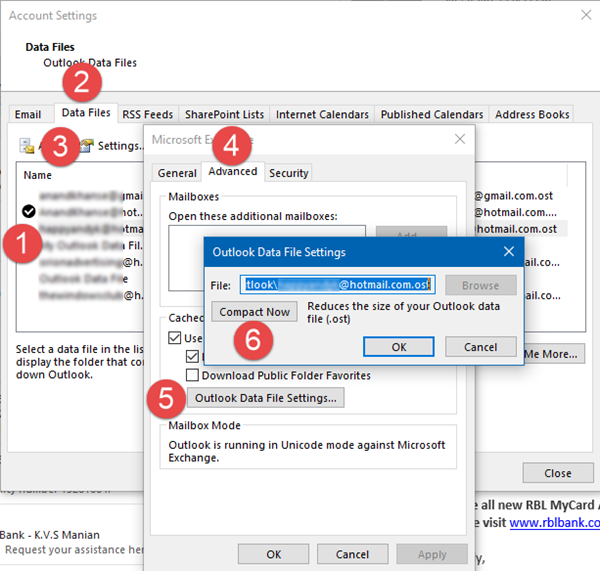

If any Outlook add-in exceeds the preceding thresholds for CPU core or memory usage, or tolerance limit for crashes, Outlook disables the add-in. Administrators cannot override this threshold. There are techniques to ensure that blocking does not occur. Add-ins can reach this threshold when they do not regularly yield processing while performing long-running tasks. When this occurs, the Office application automatically restarts all the active add-ins for a document or mailbox (where applicable), and warns the user as to which add-in became unresponsive. This affects the user's experiences of the add-in and the Office application.
#Outlook optimize database windows
Administrators can override this dynamic setting with an explicit limit by using the MemoryAlertThreshold Windows registry key as a global setting, ir adjust the alert interval by using the AlertInterval key as a global setting.Ĭrash tolerance - A default limit of four crashes for an add-in.Īdministrators can adjust the threshold for crashes by using the RestartManagerRetryLimit registry key.Īpplication blocking - Prolonged unresponsiveness threshold of 5 seconds for an add-in. This memory usage limit uses physical rather than virtual memory to ensure performance on devices with limited RAM, such as tablets. At a default interval of 5 seconds, the client warns the user if physical memory usage for a set of add-ins at the document or mailbox level exceeds 50%. Memory usage - A default memory usage threshold that is dynamically determined based on the available physical memory of the device.īy default, when a Office client detects that physical memory usage on a device exceeds 80% of the available memory, the client starts monitoring the add-in's memory usage, at a document level for content and task pane add-ins, and at a mailbox level for Outlook add-ins. Administrators might want to use the AlertInterval registry key to raise the threshold to reduce the display of this warning message if users run CPU-intensive add-ins.

If the user chooses to continue, the Office client does not ask the user again during that edit session.

If the Office client detects the CPU core usage of an add-in is above the threshold value, it displays a message asking if the user wants to continue running the add-in. The default interval for an Office client to check CPU core usage is every 5 seconds. Be sure to test your Office Add-in on your target Office application by using a range of possible data, and measure its performance against the following run-time usage limits.ĬPU core usage - A single CPU core usage threshold of 90%, observed three times in default 5-second intervals. These limits help ensure performance for your users and mitigate denial-of-service attacks. Run-time resource usage limits apply to all types of Office Add-ins. You can also optimize the performance of your add-ins on desktop and mobile devices by optimizing the use of resources in your add-in design and implementation. These run-time resource usage limits apply to add-ins running in Office clients on Windows and OS X, but not on mobile apps or in a browser. To create the best experience for your users, ensure that your Office Add-in performs within specific limits for CPU core and memory usage, reliability, and, for Outlook add-ins, the response time for evaluating regular expressions.


 0 kommentar(er)
0 kommentar(er)
